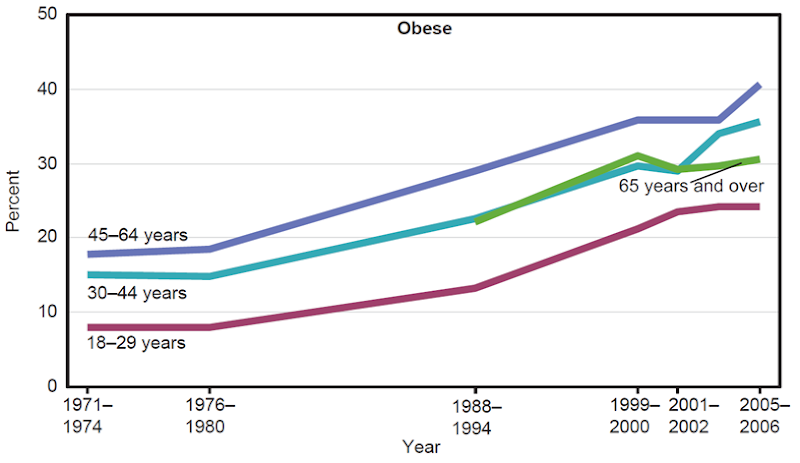Graph of the Day: U.S. Obesity, 1971-2006
Evidence suggests that the morbidity associated with obesity may increase with longer duration of obesity (7,8,10). Therefore overweight and obesity trends among young adults and children may signal future morbidity. Although young adults (18–29 years, and the topic of this year’s Special Feature) have lower prevalence of obesity (24%) compared with persons 30 years and over (31%–41%), it is noteworthy that the proportion of young adults who are obese has more than tripled from 8% in 1971–1974 to 24% in 2005–2006 (Figure 7), while in most other adult age groups the prevalence doubled during that time period. The increasing prevalence of obesity among adults has been accompanied by an increase of overweight among children (defined as a body mass index (BMI) at or above the sex-and age-specific 95th percentile BMI cut points from the 2000 CDC Growth Charts). The percentage of children (6–11 years of age) and adolescents (12–17 years of age) who are overweight has risen since 1976–1980. The percentage of preschool-age children (2–5 years of age) who are overweight doubled from 1976–1980 (5%) to 2005–2006 (11%) (11; data table for Figure 7; see related Table 76). In 2005–2006, 15%–18% of children and adolescents were overweight (data table for Figure 7). Between 1999–2000 and 2005–2006, the percentage of children and adolescents who were overweight has been steady (12).
Health, United States, 2008, U.S. Department of Health and Human Services, Centers for disease Control and Prevention, National Center for Health Statistics. Via The Oil Drum
